Image Credit: Energy Vanguard
Image Credit: Energy Vanguard The Aros smart window air conditioner isn't a new type of air conditioner. It uses the same cooling technology as other room air conditioners. The main difference is that it comes with an app and can be controlled from your smartphone.
Image Credit: Quirky Dr. Garthen Leslie came up with the idea to pair a smartphone app with a window air conditioner.
Image Credit: Quirky Early reviews of the Aros smart window air conditioner on Amazon are mixed. Some love it. Others complain mainly of the noise but also the too-bright display and the quirkiness of the app.
Image Credit: Amazon
When it comes to air conditioning, there are a lot of bad products and bad ideas out there. Here are a few: You can buy a cover for your condenser that could kill your compressor. Some people don’t think the outdoor unit really needs to go outdoors. (They’re wrong!) And then there’s the strange notion that attaching a kraken to your air conditioner is a good way to distribute the air. Today, though, I’m going to look at a product that’s not terrible.
Yes, I’m talking about the window air conditioner (also known as the room air conditioner or window shaker). I’ll discuss them in general first, but then I’ll take a look at a new product on the market, the Aros smart window air conditioner.
The story of window air conditioners
In the middle of the twentieth century, homes went from having no air conditioning to getting window air conditioners. The whole plot of the 1955 Marilyn Monroe movie, The Seven Year Itch, in fact, revolved around a window air conditioner. (And here’s a bit of trivia for you: It was in this movie that Marilyn Monroe had that famous subway breeze blowing her skirt up.) I experienced this myself when my grandparents first installed window units in their Leesville, Louisiana home in 1970.
Window air conditioners are perfectly fine in many respects. They allow you to do zone cooling in your home without worrying about pressure imbalances and bypass ducts. They can be less expensive to operate than a central air conditioner because you don’t have to keep the whole house at the same temperature. The many duct problems I’ve written about in this blog aren’t an issue because they have no ducts. And they’re a lot less expensive to install.
They do have their drawbacks, however. The main one is noise. With the compressor sitting right there, separated from you by a little bit of plastic, metal, and filter, you won’t be listening to the birds sing outdoors. In fact, you may not hear the birds sing indoors, unless you have a really loud parrot or get really close. (But who keeps birds in their house anymore? I don’t think I’ve been to a home with birds in decades.)
Another drawback is the loss of use of the window you install the air conditioner in. You can no longer use it to cross ventilate for natural cooling, and it blocks natural light as well.
You need cooling
Sometimes, though, the drawbacks just don’t matter.
You need cooling.
Baby, I’m not fooling.
I’m gonna send you,
Back to schooling.
Ah, there goes my secret. Yes, I was a teenage boy in the ’70s. In fact, I recall listening to Led Zeppelin II one evening in the summer of ’77 on my 8-track tape player at my grandparents’ house as the window air conditioners were humming in the other rooms. (They had three.) I was writing a letter to no one in particular — and which, by the time I was done, I wanted no one to see. But that’s another story.
These days, most single-family detached homes have central air conditioning. Even my grandparents’ house got it in the ’90s. Window air conditioners are more often used in big condo and apartment buildings at latitudes higher than where I’ve lived all but 7 years of my life (south of 39°). The DC area and north are where they prevail here in North America.
In a big building, it can be difficult to run refrigerant lines to install any kind of split system air conditioner. Locating the outdoor unit might be difficult or impossible as well, so if you want cooling, the window air conditioner is your answer.
Martin Holladay wrote a comprehensive article about window air conditioners a couple of years and concluded that they can save energy when used instead of central air conditioners. That’s debatable for us here in the humid Southeast, where it’s not all about cooling but controlling the humidity as well. Anyway, Martin discussed a lot of good stuff, including efficiency ratings and the difference between SEER, which is used for central air conditioners, and EER, used for window units. I recommend reading it.
Building enclosure first
Now here’s one of the most important principles of efficient air conditioning: Your air conditioner is the faucet; the building enclosure is the cup. You don’t want a leaky cup. Building enclosures can leak heat in more than one way: through air leakage, by conduction, and by radiation. This is building science 101. You stop those leaks by air sealing, insulating, and minimizing the amount of heat gain through windows.
The absolute truth is that you’re better off with an air conditioner that has the minimum efficiency allowed by law and a really good building enclosure than you are with a 30 SEER ground-coupled, water-to-air model with a thermo-turbo encabulator max and a crappy enclosure. Or similar, since you’ll probably never find such a device, if you know what I mean. The point is, if you have any control over the building enclosure, it’s best to work on that before doing anything with the air conditioner.
The Aros smart window air conditioner
Not everyone has such control, however, least of all those people living in big apartment or condo buildings. So window air conditioners have their place. If you’re in the market for such a device and want to get an efficient model, there are a lot of choices. The EPA website provides a list of all Energy Star certified room air conditioners, and I encourage you to download their spreadsheet to aid your search. You may also run across the Aros, billed as a smart window air conditioner.
A “smart” air conditioner? This buzz word is one that I’ve grown weary of in recent years, as it usually means there’s a smartphone app associated with it. As you can tell from the photo below (Image #2), that is indeed the case here.
In this case, the app gives you similar control over the Aros to what the Nest thermostat provides for your central heating and air conditioning system. And it goes even further. It connects to the GPS in your phone to turn the Aros on and off based on your proximity to home. Their website says it does so “in a non-creepy way,” though, so it must be OK.
As far as the air conditioner itself, there’s not much new here. They do something a little different from most with the air flow by directing the conditioned air upward. Otherwise, it works like any other direct expansion air conditioning system.
Repeat: There’s nothing really new about the Aros except that it can be controlled with a smartphone app. It’s not a new type of air conditioner.
Who is behind the Aros?
Two names are important: Quirky, a company that helps bring ideas to market, and Garthen Leslie, PhD, the person who had the idea of the Aros smart window air conditioner. The former is another crowdsourcing company that acts as a sounding board for people from all over to develop their ideas and see if they can bring them to fruition.
The latter is a 63-year old Washington, D.C. man with a background in computers and management. Although the Quirky website says he “spent time at the Department of Energy helping to cut costs and conserve resources,” his resume on LinkedIn and yatedo.com doesn’t mention the DOE at all. His degrees and career have focused on computers and management, not energy or building science.
And that’s fine. Good ideas can come from anywhere. If a management guy can come up with an idea to save energy and make people more comfortable, more power to him. Somewhere along the way, though, I would hope someone who knows not just HVAC but the broader subject of building science would be involved to make sure the idea has merit and is developed properly.
According to Quirky, the idea came to Leslie as he looked at all the window air conditioners in apartment buildings in the DC area and wondered how much energy they were wasting as they ran all day long. So, Dr. Leslie posted his idea to the Quirky website, and a month after they decide to go with it, they had a product that’s manufactured in China. GE is a partner in the project, presumably to add the technical punch that the Quirky innovators lacked. You can read more about it and watch videos on their site.
It’s a great story, and Dr. Leslie is reaping quite a reward for his idea. He’s already received a check for $100,000 and is expected by the Quirky team to end up with perhaps ten times that much from Aros sales.
The Aros isn’t a silver bullet
The Aros isn’t a bad idea. It may even save some energy and help people be more comfortable. Since the target market is people who live in big buildings and don’t have central AC, this may be one of the main things they can do to save energy.
The ideal scenario is someone who lives in a big building, goes to work in the morning, and leaves their window air conditioner on all day so the place is cool when they come home. If they’re looking to upgrade to a new window air conditioner that doesn’t have to run all day, the Aros is one possibility. But is it the best choice?
Plenty of window air conditioners have programmable thermostats. If you have a regular schedule, those will do what you need as well as the Aros. And if you go with an Energy Star certified model, you’ll probably find one that’s more efficient. At 10.9 EER, the Aros is in the bottom third of Energy Star room air conditioners.
Judging by the reviews on Amazon (as of 15 July 2014), you’re better off waiting until they get the kinks worked out if you’ve got your heart set on a new Aros. The most common complaint is that it’s loud. Others are that the display is really bright and doesn’t go off (that may be fixed now) and that the app is a bit, shall we say, “small q” quirky.
My advice would be to get a good Energy Star model that’s programmable. I’m not as down on the Aros as Lloyd Alter of Treehugger is; I just don’t think it’s the best choice. Maybe future generations of the Aros will be better, but for now, I’d say stick with the tried and true.
The IT world invades home performance
What bothers me the most about this is the disturbing trend I see: The disruption-obsessed, IT starter-uppers are looking everywhere they can to figure out how to make money with another app. Nest was so successful with their learning thermostat a couple of years ago that all eyes are now focused on the home energy efficiency market. There’s a lot of stupid money out there, and these folks are good at gobbling it up.
This doesn’t have to be a bad thing — if they do what Nest did and bring in some building science experts. (Michael Blasnik consulted on the Nest thermostat and is now a Nest/Google employee.) The folks at Quirky could benefit from some of that, I’m sure. Their product isn’t bad, though. They’re just adding new features to a product that already exists and for which there’s a need.
Recently I saw a scary product idea that exists only as a Kickstarter project right now. If it gets funded and finds its way into the marketplace, it will be worse than that compressor-killing outdoor unit cover I mentioned at the start of this article. I’ll tell you about that one soon.
Allison Bailes of Decatur, Georgia, is a speaker, writer, energy consultant, RESNET-certified trainer, and the author of the Energy Vanguard Blog. Check out his in-depth course, Mastering Building Science at Heatspring Learning Institute, and follow him on Twitter at @EnergyVanguard.
Weekly Newsletter
Get building science and energy efficiency advice, plus special offers, in your inbox.

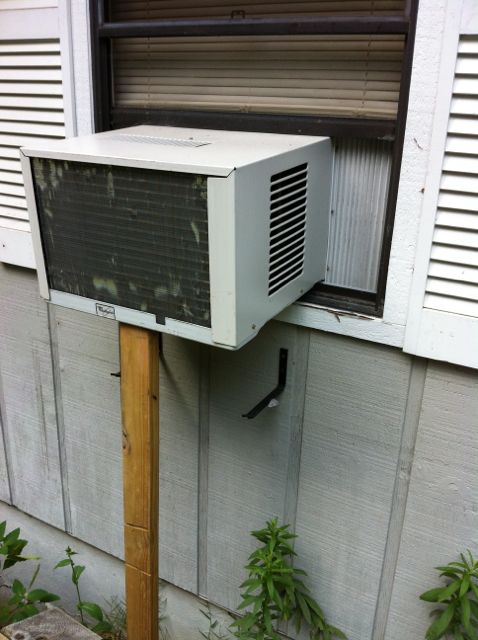




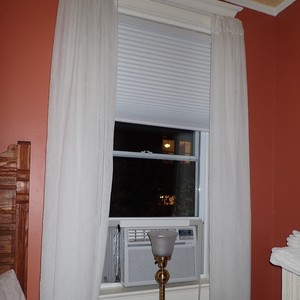
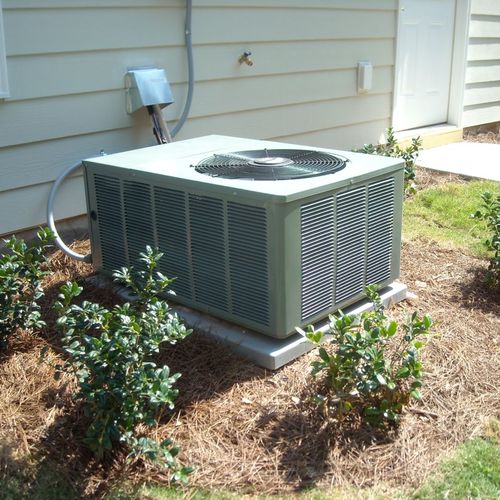
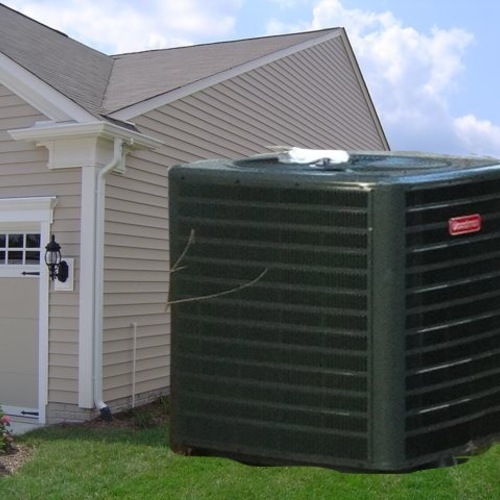
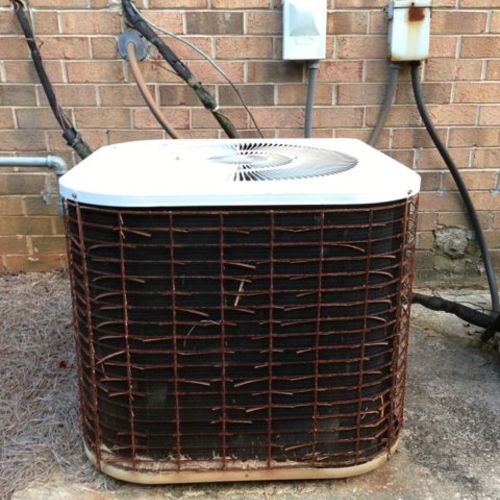






14 Comments
Soooo unprofessional!
The ideas you say are good but that air conditioner installation is a terrible example and looks really, unprofessional. One reason people don't like window air conditioners is because they are ugly and an installation like this makes it worse. Never use a 2x4 to install the unit, it looks like a redneck repair. Also, must a window air conditioner be tilted? Maybe slightly, but I notice some people have then hanging out the window at a ugly angle. As Howard Stern would say, it makes the units look "flaccid"
Response to Robert Connor
Robert,
"Soooo unprofessional!" You think?
Is there any possibility that that was Allison's point?
Response to Robert Connor
It's always interesting to me to see what people pick up on in my articles. The most important point I made was in the last section on the IT industry invading the home energy efficiency market without knowing anything about building science or even HVAC, their main focus. The second most important point was that the Aros is just a regular window AC with a smartphone app. The stuff at the top was background info.
The photo at the top was just to add visual interest. And you're right - it's not the prettiest installation. Then again, it doesn't need to be. Sometimes functional is good enough. I took the photo in North Carolina at a cabin that's used only in the summer.
Having grown up in Texas and Louisiana and later having spent nine years in Florida, I've experienced window air conditioners. I've lived in at least 8 different houses cooled by window units, and I can tell you that in the South, an ugly window AC beats having no AC at all. I can also tell you that most people in the South want central AC, and every new home built since the '60s has had it with the exception of a few rare cases.
Unintended Consequences
My town is currently experiencing an "Unintended Consequence"...
We are having a drought ...lake levels are very low...
Citizens have rallied and cut consumption significantly ...
This week we are purging the water supply because of "deposits in the system" that were never a concern in the past.
Makes me wonder what will happen if these "smart" AC controls are widely adopted.
(instead of Enclosure Improvements)
AC shuts down while the occupants are away ...
The homes (& contents) get "charged" with heat during the day....
Then in the late afternoon thousands of air conditioners all over town start kicking on.
all at the same time...
Exactly at the WORST time for "The Grid" ....
Simply having more visibility might help
I have no idea if the Aros, as a device, actually saves energy or not. Whether it's more efficient (probably not) or whether the bells & whistles cause it to automatically run less often.
But if the app gave meaningful feedback about use over time, or reminders about use while away, I could see it helping. As Opower has learned, just putting people's behavior in front of them can change the behavior.
The IT world doesn't have to know a ton of building science to get this kind of thing right, I think. (Though it might be nice to normalize for weather... and then I suppose things start to get a little more complicated)
On the other hand, as this stuff fragments, if you have 12 apps each telling you how much your toaster oven, vacuum, boiler, A/C, or blender used, you're not getting the big picture. So if this stuff could start to work together... well, I can dream.
Grid Load Consequences
John - I read a study evaluating air conditioner usage in our state, which included in the consideration the impact of daytime setbacks on peak evening load. They have a noticeable impact, but it still ended up only being something like 2-4%. The good news is that on the hottest days of the year, when grid load is the worst, window air conditioners are probably already hitting 100% duty cycle so something like this won't have much impact.
Response to John Brooks (post #5)
The thing has a predictive/learning algorithm, not just GPS time sensing. During hotter weather it will turn on EARLIER in the day to hit the desired setpoint as the occupant owner walks in. But since it doesn't run during the day when it doesn't need to (rather than the leave-it-on-all-day approach used by many apartment dwellers to avoid the swelter), wide adoption would reduce the average power use without affecting the peak.
The more significant AC related peak grid load situation is all the oversized central AC units that are set back or turned off during the day then cranked on when people come home in the afternoon. They are big enough to catch up in a reasonable amount of time but consume gobs of instantaneous power during those recovery ramps. Programmable T-stats don't fix that by very much unless they are "learning" T-stats (like the Nest) but even then, the greater the oversizing factor, the more aligned it is with the home-coming hour.
The impact "...only being something like 2-4%..." on the peak load is actually a real problem ("only" does not apply). The cost of the the spinning reserves required to serve that 2-4% is huge compared to the base load, and it affects the rates paid. During heavy AC loads the wholesale cost of power to the grid operator from those peaking plants is often several times the fixed residential rates(!). Smart-grids and structuring rates where the users pay the wholesale power directly based on the costs during the time of use would have a severe moderating effect on the super-peaks, especially if integrated into smarter appliances/meters that can be set to stay off when the price exceeds a programmed number.
The fixed-rate masks the true cost to the user- you get charged the same amount at 4AM on a mild spring day (when the wholesale price of power is 2-3 cents/kwh) as 4PM on the hottest day of the year (when the wholesale cost of power is north of a buck a kwh.) The business-as-usual utility model of the past 100 years is broken. Without pricing feedback there is nothing rational about the retail electricity markets, but it doesn't take a lot of smarts to get that feedback, and people WILL make rational choices, like pre-cooling their homes on super-hot days to coast through the price peaks, or charging their electric cars after midnight (or mid-day, in very high solar-power areas) when the marginal cost of power is a few cents, rather than cruising home at 4PM, plugging in the car and turning on the 3x oversized AC by 4:10, melting the transformers at the substation in the process.
This is a soluble problem, but the Aros isn't really a part of the solution, even if it save fixed-rate consumers a few bucks on the monthly bill.
The Smart Grid is Dead
Although a smart grid with real time pricing is desirable, it has been opposed and sabotaged to the point that I've lost all hope: http://stopsmartmeters.org/
Xcel Energy botched the Smart Grid City Pilot: http://greenbuildingindenver.blogspot.com/2010/08/smart-grid-city-update.html
The Luddites won't win this one (response to Kevin, post #8)
A paradigm shift doesn't happen overnight, and top-down approaches more favorable to the utilities' interests than the ratepayers' perceived interests guarantees opposition. But the whole utility industry is in a state of flux with the looming proliferation of distributed privately owned generation and privately owned storage, and the regulators have yet to catch up. California has taken a top-down approach by the regulators, and has generally favored the distributed assets owners over the utilities in the past 2 years, but it remains to be seen how that will continue to work out long term.
The states to watch right now are NY and HI, both of which are in open-forum re-writing the regulations to make the grid more user-accessible and flexible (and resilient), which will open up new options for how electricity is bought & sold at the retail level. This probably won't settle out in those states for another couple of years, but it's a big can o' worms wriggling on the table right now. MA is still in a top-down regulatory mode (though not as rigidly as CA), but is also evolving rapidly, and may end up taking the NY approach (whatever that ends up being) in the end.
http://www.greentechmedia.com/articles/read/will-new-york-lead-the-way-to-animated-consumer-markets
http://www.greentechmedia.com/articles/read/hawaii-crosses-the-energy-rubicon
While this is happening first in high-electricity-cost states, as the price of grid-tied PV drops under $1.50/watt (all-in retail installed price, no subsidy), and the price of storage drops below $200/kwh (both of which are expected to happen prior to 2020) the economic incentive for PV becomes compelling almost everywhere in the US. If the utilities & regulators can't/won't adapt, grid defection may start to take off (as it already is in parts of Australia, Germany, and Hawaii), which pushes the costs of maintaining the grid onto the ratepayers that don't have the access to the capital (or sun)- it could get ugly. This is why NY is trying to re-write the rule-book now, to avoid the "utility death spiral" and correspondingly high retail electricity cost for the less well endowed ratepayers.
Thanks for insight, Dana
With common sense in such short supply, I'm convinced that grid defection is the way forward. Xcel has already begun to attack net metering.
Screw 'em, I've already defected from the natural gas grid:
http://www.ajmadison.com/cgi-bin/ajmadison/PBH092E12CB.html
The whole People's Republic of Boulder is defecting too. http://www.bcbr.com/article/20140507/NEWS/140509949
Yup, and that's just the beginning... the thin edge of the wedge
I've watched the situation in Boulder evolving with interest over the past couple of years- this has been happening in Germany too, but in different ways. The town of Feldheim built their own parallel grid when they couldn't get a discount on electricity even though they were producing more than they were consuming on bio-cogeneration, wind & solar that they had invested in as a town. Rather than taking the feed in tariff and selling to the grid only to buy back at a higher price, they built their own micro-grid from scratch, and pay about half. As I undersand it some houses are still hooked up to both grids, but the grids don't connect, and most people are on the town-grid. The larger utilities distribution assets are still owned by the utility- but almost nobody in Feldheim is using it. That sort of isolated micro-gridding will start to happen at the commercial building or single-family sized situation if they make keeping distributed privately owned storage & generation hooked up to the utility too onerous.
The large central utility business model is clearly going to fail, even if (as happened in Australia this week) they pull back on carbon taxes and emissions targets to try to save them. Some utilities are praying for rapid deployment of electric cars to boost demand, but for that to happen batteries will have to be cheap enough that it'll be cost effective to deploy on the ratepayer's side of the meter to avoid time-of-use charges, even if they don't have access to the sun. At that point the gloves come off- people will be able buy power when it's cheapest, not when they use it, idling utility & merchant owned peaker plants. Only a regulatory environment that puts the utility interests ahead oft the rate payers interest will stop that, but that will only the accelerate grid-defection rationale.
For now private ratepayers in CA under recently modified rules have been allowed to install a limited amount of storage on their side of the meter, and must be scaled to the size of their PV (thus no PV== no storage) but it's unlikely that the evolution in CA will stop there. The benefits of distributed storage are huge, but the utilities want to be able to control it's use, especially if the battery is allowed to feed the grid as well as draw from it (which has multiple rationales, some valid, some less so.)
These are the reasons Barclays Bank is downgrading ALL utility sector bonds- it's inevitable that some numbers of them will fail in the next 10 years, some more spectacularly than others. I'm personally betting against the vertically integrated state wide monopoly Georgia Power, given that they are pre-charging the ratepayers for not-yet-built nukes that will have a lifecycle cost than PV + storage solutions in less than 10 years. When the full cost of the nukes eventually gets applied to the ratepayer's bills grid defection will be a no-brainer type investment for some. Those new nuke are assets almost guaranteed to become stranded, with only a slim chance of operating for their projected lifecycle in the face of ever cheaper PV and ever cheaper grid-storage.
Response to Martin and Allison
Yes, it is unprofessional looking. Why not set a GOOD example of installation instead of making excuses for redneck home repairs? I hope Whirlpool sees this and tells you to delete it because it makes their product look bad. Have Dana talk to them - I notice he is really good at using mathematics to make long excuses.
Response to Robert Connor
Robert,
I think it's safe to say that GBA readers know what a neat, professional installation is supposed to look like. Allison Bailes chose the photo because it makes most (but clearly, not all) readers smile.
According to medical researchers, smiling has many benefits.
Kevin Dickenson- give this podcast a listen
In particular Jigar Shah's comments on the utility proposals for displacing the lost capacity for the San Onofre nuke:
http://www.greentechmedia.com/articles/read/as-more-nuclear-plants-shut-down-can-distributed-energy-fill-the-gap
There's room for a real earthquake in the biz-as-usual model of utilities, and the cheaper renewables get, the higher the stress & pressure!
Log in or create an account to post a comment.
Sign up Log in